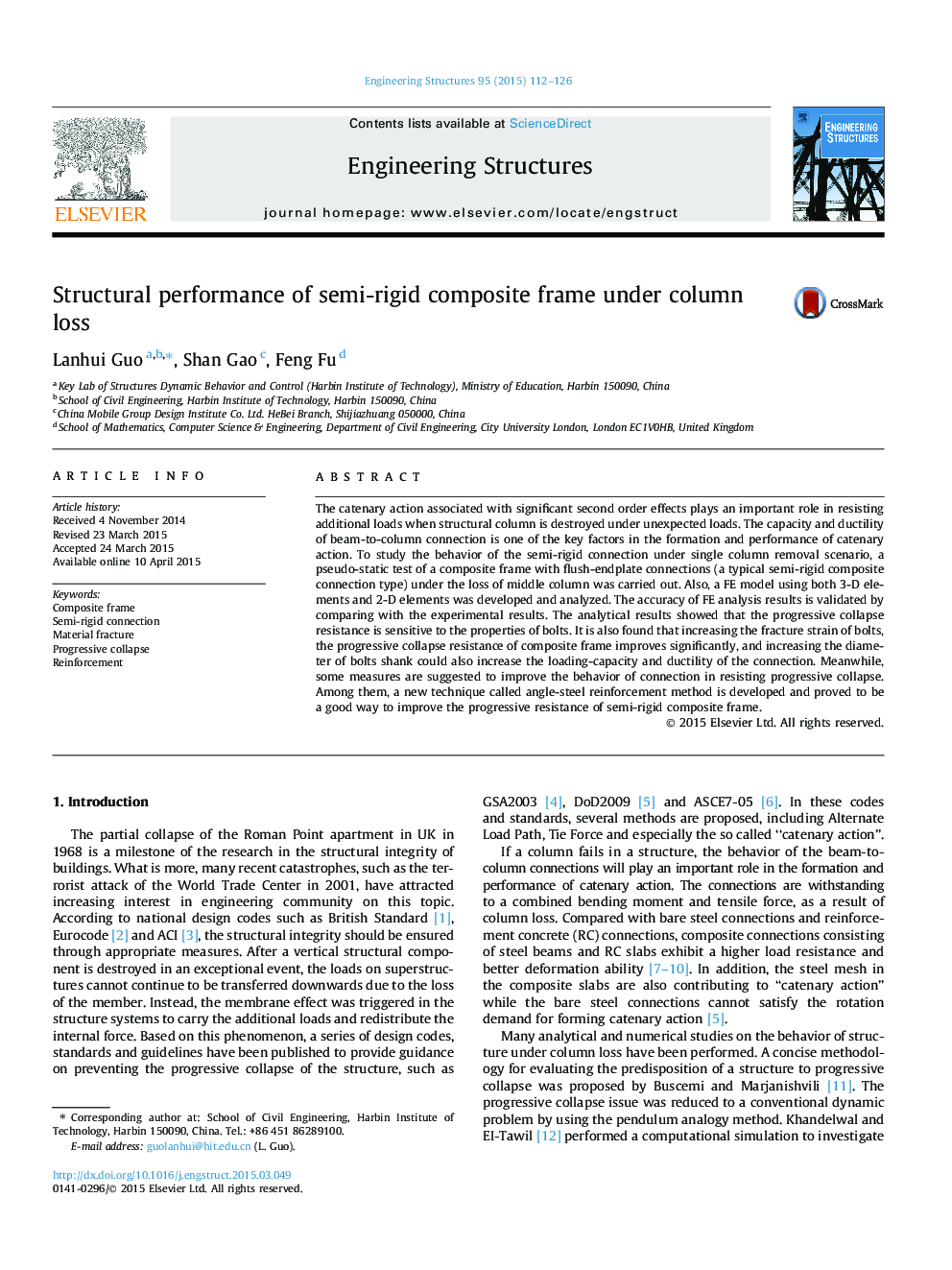| Article ID | Journal | Published Year | Pages | File Type |
|---|---|---|---|---|
| 266300 | Engineering Structures | 2015 | 15 Pages |
•A steel–concrete composite frame with semi-rigid connection was tested.•A new angle-steel reinforcement measurement of semi-rigid frame is proposed.•The diameter and fracture strain of bolts have obvious effects on semi-rigid composite frame.•The Quasi-static analysis procedure can accurately simulate the failure mode of the frame.
The catenary action associated with significant second order effects plays an important role in resisting additional loads when structural column is destroyed under unexpected loads. The capacity and ductility of beam-to-column connection is one of the key factors in the formation and performance of catenary action. To study the behavior of the semi-rigid connection under single column removal scenario, a pseudo-static test of a composite frame with flush-endplate connections (a typical semi-rigid composite connection type) under the loss of middle column was carried out. Also, a FE model using both 3-D elements and 2-D elements was developed and analyzed. The accuracy of FE analysis results is validated by comparing with the experimental results. The analytical results showed that the progressive collapse resistance is sensitive to the properties of bolts. It is also found that increasing the fracture strain of bolts, the progressive collapse resistance of composite frame improves significantly, and increasing the diameter of bolts shank could also increase the loading-capacity and ductility of the connection. Meanwhile, some measures are suggested to improve the behavior of connection in resisting progressive collapse. Among them, a new technique called angle-steel reinforcement method is developed and proved to be a good way to improve the progressive resistance of semi-rigid composite frame.
